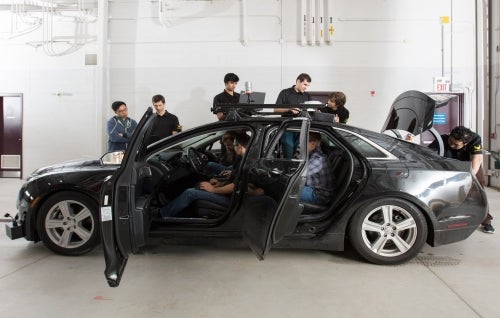
Building an artificial brain that will one day replace human drivers is an incredibly complex technical challenge, say the researchers leading Waterloo’s autonomous vehicle project
The basic idea is simple enough: in fully autonomous vehicles of the future, computer systems will replace human drivers.
But as front-line researchers working to develop reliable artificial brains to do that job are quick to point out, actually pulling it off, especially when safety is paramount, is an incredibly complex technical challenge.
“Making an autonomous train system is relatively straightforward because you know it is always going to be on tracks,” says Sebastian Fischmeister, a University of Waterloo engineering professor who specializes in safety-critical systems. “But a car can drive anywhere and that’s why it is so much tougher.”
For all their faults and weaknesses, the fact is people are pretty good at perceiving the world around them, making predictions and decisions based on sensory input, and taking appropriate action by hitting the brakes or turning the steering wheel.
They see, they hear, they make judgment calls and they do the right thing in the overwhelming majority of situations.
Statistics show, for instance, that about 100 million miles of road are travelled for every traffic death in the United States and that distance is even greater in Canada.
Krzysztof Czarnecki, co-leader of an autonomous vehicle project at Waterloo, says those numbers “set the bar very high” given that the brains in self-driving cars will, at minimum, have to be as competent as humans to get the green light from authorities and gain acceptance from users.